Envision a kitchen where every aspect is deliberately designed to foster serenity and equilibrium. Japanese-style kitchens are more than just practical spaces; they represent a harmonious fusion of simplicity, mindfulness, and balance. By embracing centuries-old traditions, these kitchens seamlessly merge minimalism with natural elements, generating an atmosphere that calms the mind and soothes the soul.
The warmth of reclaimed wood accents, the elegance of sliding Shoji doors, or the cleverness of concealed storage solutions all contribute to a space that is both visually stunning and functionally adept. If you’ve ever longed to transform your kitchen into a peaceful sanctuary, these 25 Japanese-style kitchen ideas will inspire you to create a haven that nurtures both body and mind.
Let’s delve into how you can infuse your kitchen with the essence of Zen, and discover the secrets to cultivating a serene retreat in the heart of your home.
Minimalistic Design
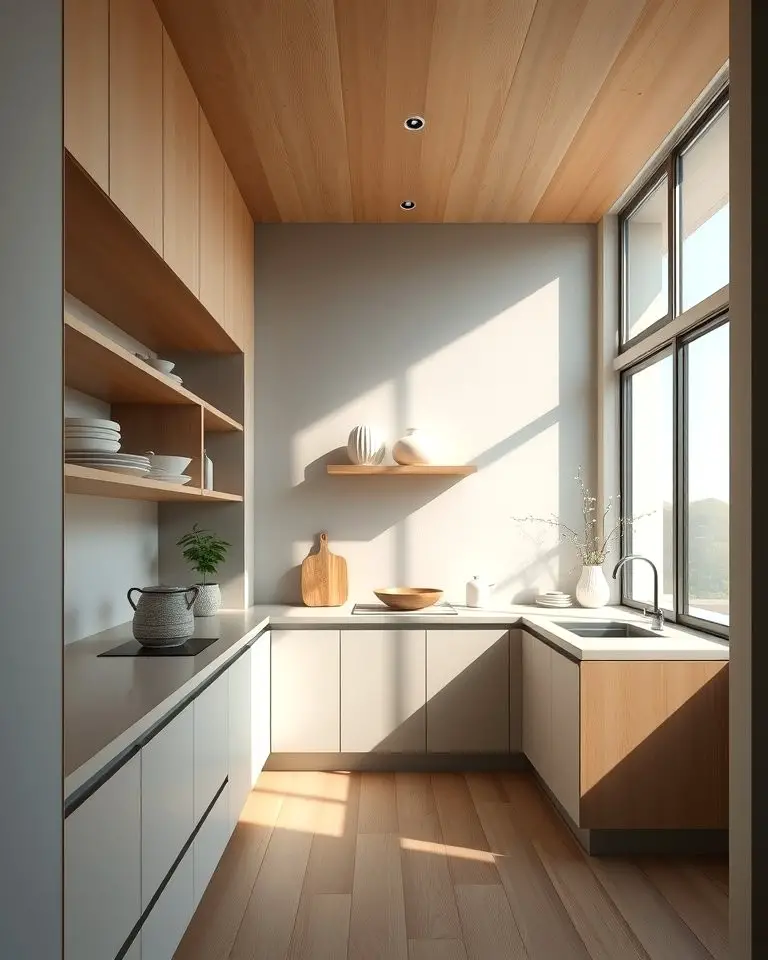
In the heart of Japanese kitchens, minimalism reigns supreme. This understated approach strips away distractions, allowing functionality to take center stage. The result is a serene environment that promotes ease of use and efficiency. Open shelving, modern cabinetry, and a palette of neutral tones work in harmony to create a sense of simplicity.
By embracing only the essentials, this design philosophy not only conserves space but also cultivates a calming atmosphere, making cooking a tranquil experience. For those seeking solace in their daily routines, minimalism is the perfect antidote.
Sliding Shoji Doors
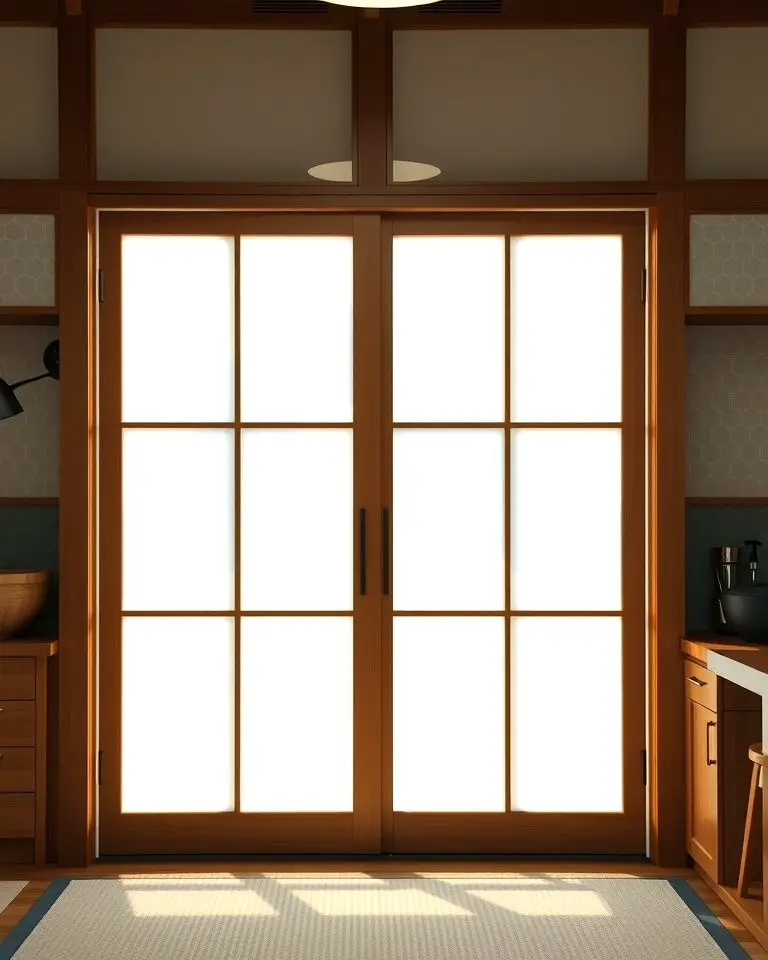
Incorporating the essence of Japanese interiors, Sliding Shoji doors bring a touch of uniqueness to kitchens. The combination of wooden frames and translucent paper allows for a perfect balance between natural light and privacy. These sliding doors are particularly useful for dividing spaces or concealing cluttered areas like pantries, as they save space by gliding instead of swinging open.
Their lightweight design and traditional aesthetic seamlessly blend style and practicality, creating an inviting ambiance.
Tatami-Inspired Flooring
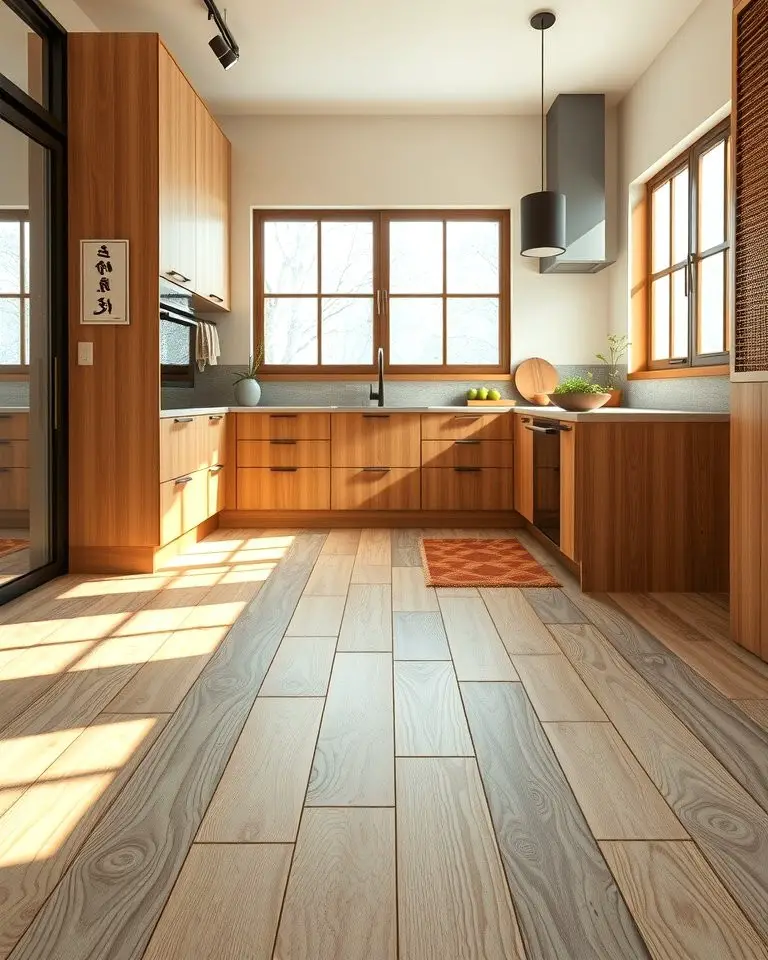
Incorporating tatami-inspired flooring into your kitchen design brings a unique blend of warmth, texture, and functionality. By adapting the aesthetic typically found in living spaces, this alternative to traditional tiles offers a soft and inviting surface that also provides a non-slip solution for increased safety. The natural look of tatami-inspired flooring harmonizes beautifully with other Japanese design elements, creating a cohesive space that exudes comfort and style.
Whether you’re seeking to add a touch of serenity or a dash of modernity to your kitchen, this thoughtful choice is sure to impress.
Open Shelving
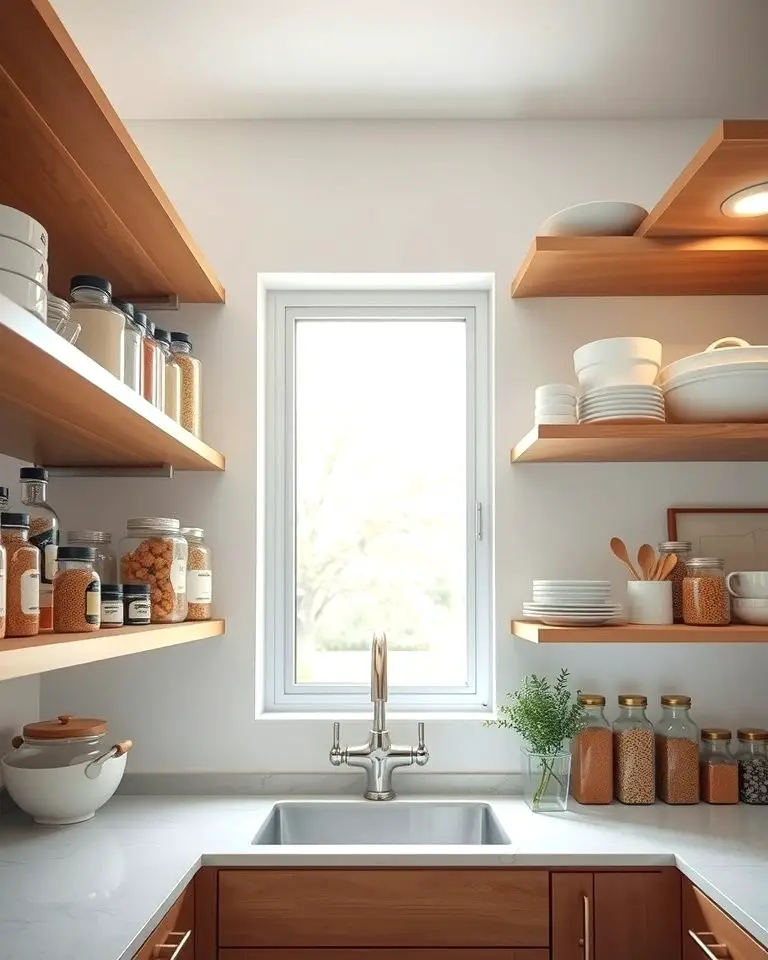
In Japanese kitchens, open shelving is a staple that seamlessly blends form and function. By showcasing everyday essentials like dishes, spices, or utensils, these shelves promote accessibility and encourage organization. This approach also cleverly reduces the need for bulky cabinetry, allowing for a sense of openness and freedom in even the smallest of spaces.
The use of materials such as wood or metal adds an element of sophistication, complementing the minimalist aesthetic while keeping your kitchen tidy and efficient.
Zen Garden Elements
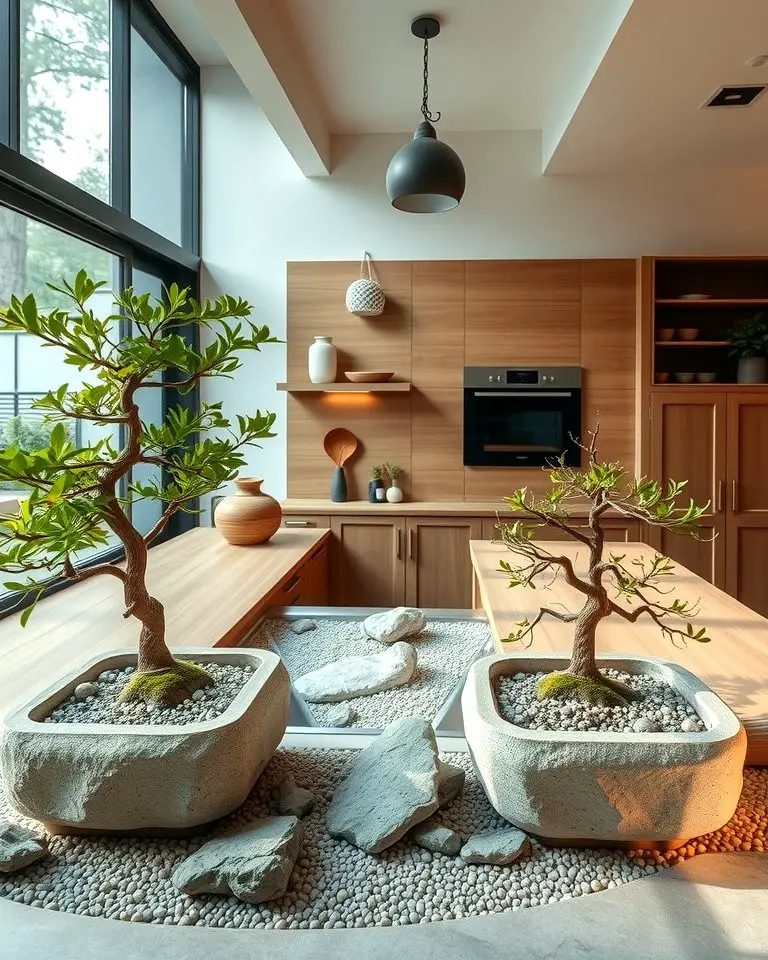
Transforming your kitchen into a tranquil oasis is just a few decorative elements away. Inspired by the serenity of Zen gardens, incorporating natural features like small rock gardens, bamboo accents, or potted bonsai trees can transport you to a state of mindfulness while cooking or dining. The harmonious balance and simplicity of Zen design seamlessly align with Japanese aesthetics, allowing you to bring a sense of calm and focus into your culinary space.
By weaving together textures and greenery, you can effortlessly create a retreat that soothes the senses and inspires the soul.
Compact Layouts
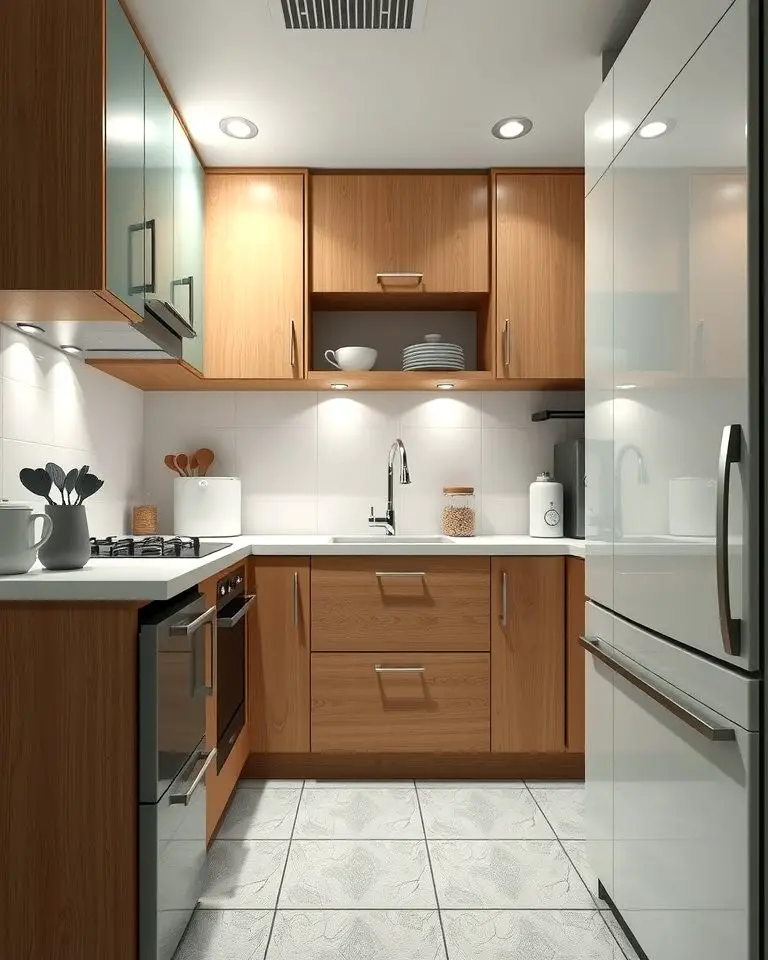
In Japanese kitchen design, compact layouts are a hallmark of urban spaces where square footage is scarce. To optimize functionality, clever storage solutions like retractable drawers and fold-down countertops are employed. This efficient use of space ensures that everything needed is within easy reach, streamlining cooking tasks and minimizing the need for excessive movement.
Moreover, the emphasis on minimalism means only the most essential items are kept, resulting in a clutter-free kitchen that feels surprisingly spacious and inviting, even in smaller homes.
Integrated Appliances
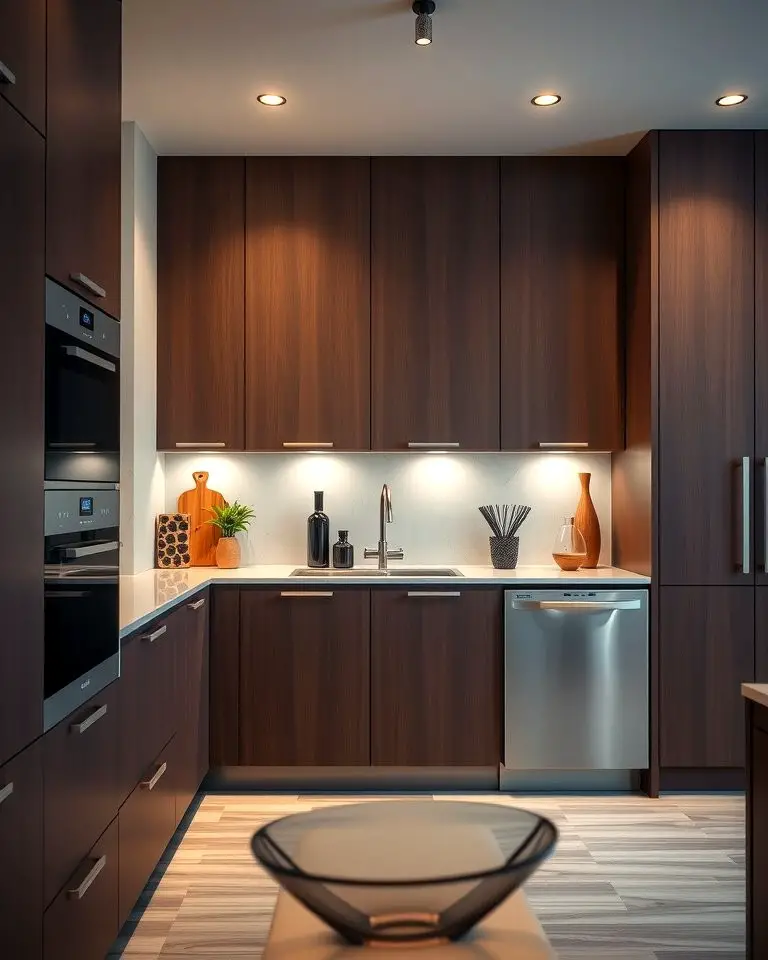
In modern Japanese-inspired kitchens, the trend towards integrated appliances has emerged as a clever way to harmonize form and function. By concealing dishwashers, ovens, and refrigerators behind custom cabinetry, the design achieves a sleek, uncluttered appearance that not only maximizes storage space but also creates an airy feel.
This innovative approach seamlessly integrates functionality with aesthetics, making it an ideal choice for those seeking both practicality and style in their kitchen. As such, integrated appliances offer a compelling solution for homeowners looking to create a cohesive, streamlined look that effortlessly blends form and function.
Low Dining Tables
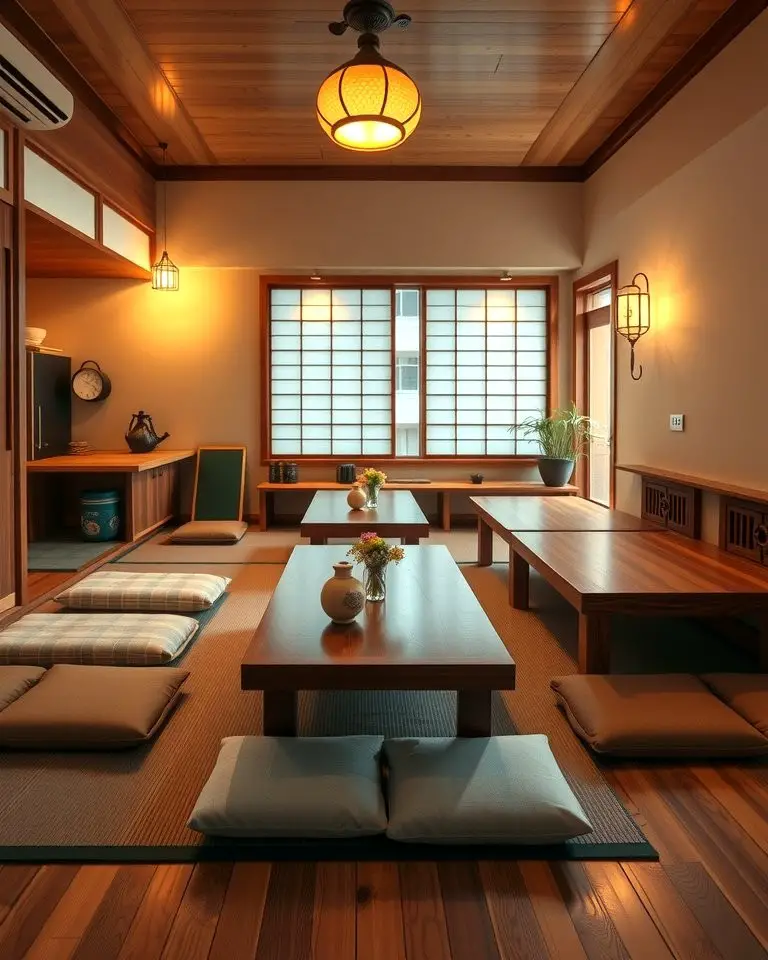
In the heart of your kitchen, a low dining table inspired by traditional Japanese tatami rooms can bring a sense of closeness and cultural authenticity. When paired with floor cushions, it invites relaxed, communal dining experiences that encourage connection and togetherness. This setup also has practical benefits – as it doubles as a prep area when not in use, saving valuable space. Crafted from materials like wood or bamboo, these tables can seamlessly integrate into your kitchen’s aesthetic.
As meals become more enjoyable and memorable, this unique setup reminds us of the importance of slowing down and savoring time with loved ones.
Bamboo Details
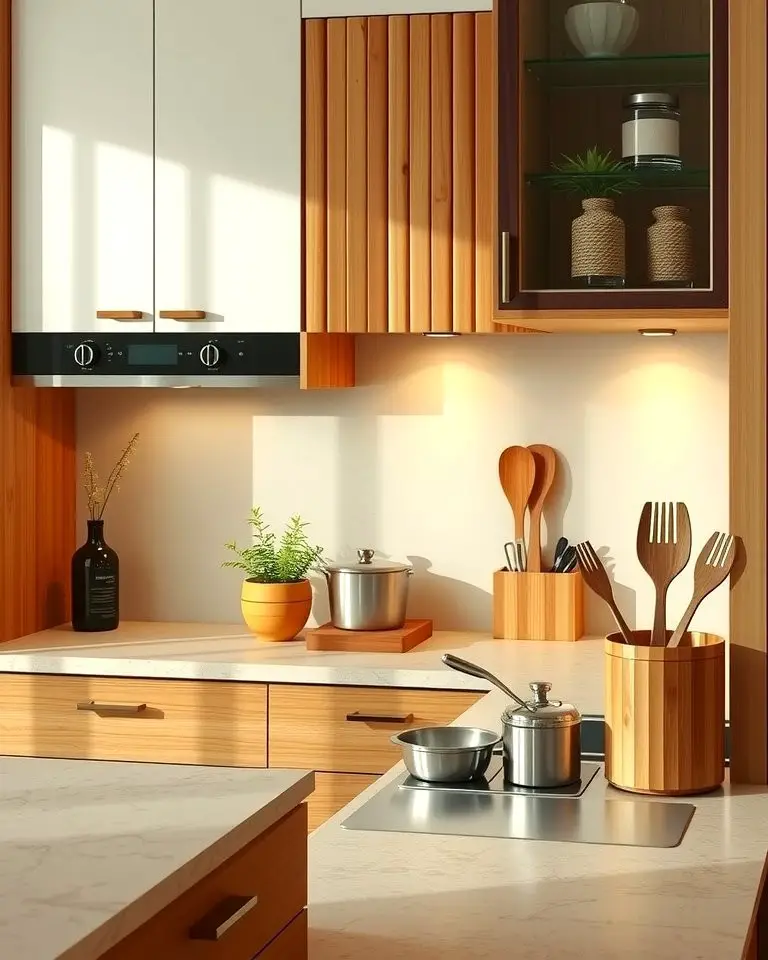
Incorporating bamboo elements into Japanese-style kitchens brings a harmonious blend of eco-friendliness and sophistication. This versatile material excels in providing functional pieces such as utensil holders and backsplash panels, while its natural texture and warm hues effortlessly complement minimalist and neutral designs, fostering a sense of balance. Moreover, bamboo’s sustainable nature makes it an environmentally responsible choice for homeowners prioritizing eco-conscious living.
As these details seamlessly integrate into the kitchen space, they not only elevate the room’s aesthetic appeal but also reinforce its connection to nature, embodying the fundamental principles of Japanese design philosophy.
Paper Lantern Lighting
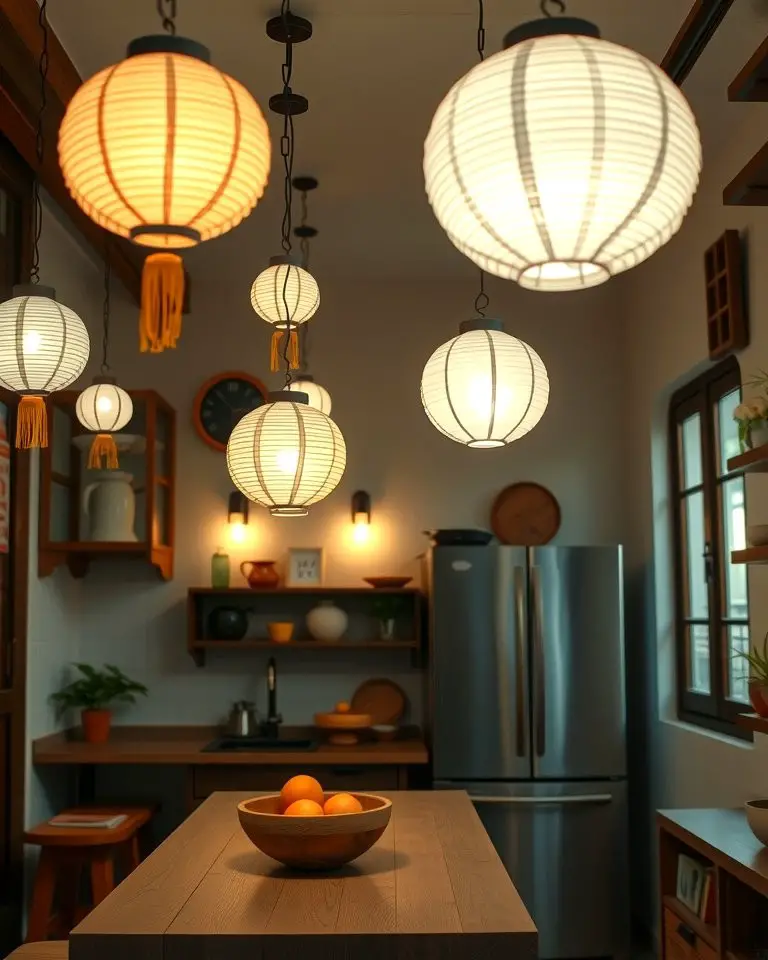
In Japanese-style kitchens, paper lantern lighting is a game-changer when it comes to creating a warm and inviting atmosphere. The soft, ambient glow they emit adds depth and coziness to the space. These delicate fixtures, often crafted from rice paper or silk, effortlessly complement the minimalist aesthetic, infusing your kitchen with a touch of traditional charm.
One of the best things about paper lanterns is their versatility – they can be used as statement pieces or grouped together for a dramatic effect. When used effectively, this lighting choice has the power to transform your kitchen into a cozy haven that’s perfect for relaxation and socializing.
Stone Countertops
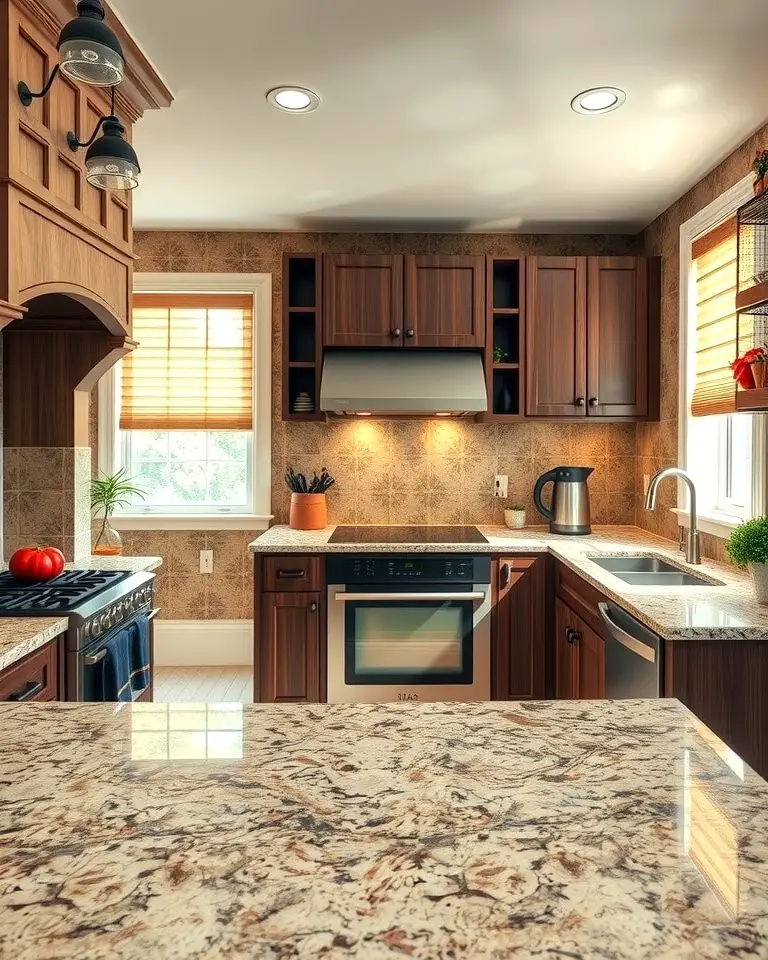
Japanese kitchens often incorporate stone countertops, such as granite or soapstone, to bring forth their inherent durability and natural charm. As these surfaces seamlessly integrate with wood and other organic materials, the harmonious blend of earthy tones creates a warm and inviting atmosphere. One of the significant advantages of stone countertops is their ease of maintenance; they are not only resistant to heat but also simple to clean, making them an ideal choice for busy kitchens.
Furthermore, the timeless appeal of these natural surfaces ensures that they will remain both stylish and functional for years to come, thereby providing a perfect fusion of elegance and practicality in the heart of the home.
Indoor Herb Gardens
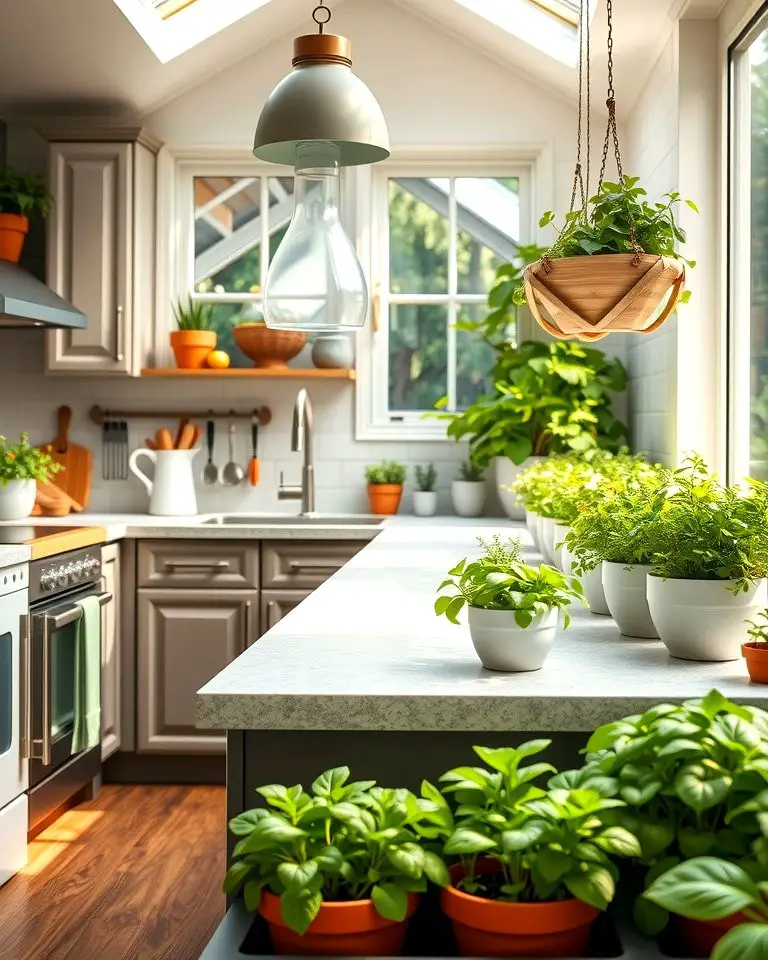
In Japanese-style kitchens, indoor herb gardens offer a harmonious blend of functionality and visual appeal. Compact planters or vertically designed garden systems can be used to cultivate herbs like parsley, basil, and mint, providing easy access to fresh ingredients right in your kitchen. The result is a natural oasis that not only adds a splash of greenery but also fosters a calming ambiance.
By growing herbs indoors, you’ll simultaneously promote sustainability and reduce waste, all while enjoying the benefits of using fresh, flavorful ingredients in your cooking.
Black and White Contrast
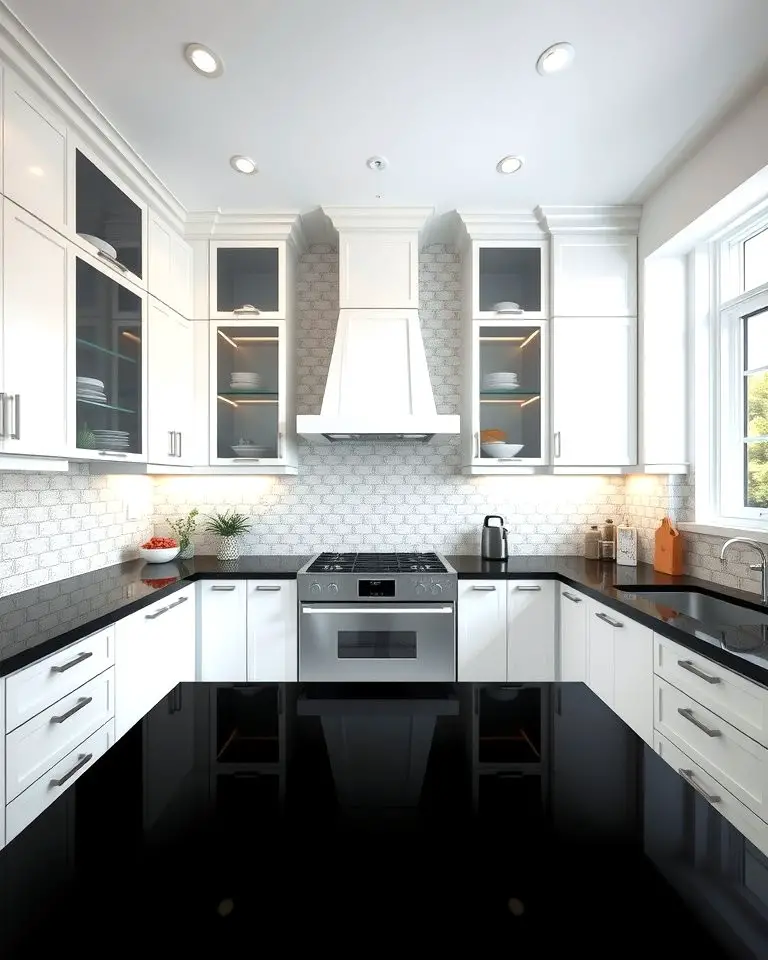
Incorporating bold contrasts into traditional Japanese kitchen designs yields a modern and captivating visual experience. A harmonious blend of black and white hues creates a striking focal point, drawing attention to clean lines and emphasizing the room’s overall simplicity.
The juxtaposition of crisp white surfaces with sleek black accents or fixtures strikes a balance between sophistication and minimalism, making it an ideal choice for those seeking a contemporary look that still honors Japanese design principles.
Wooden Ceiling Beams
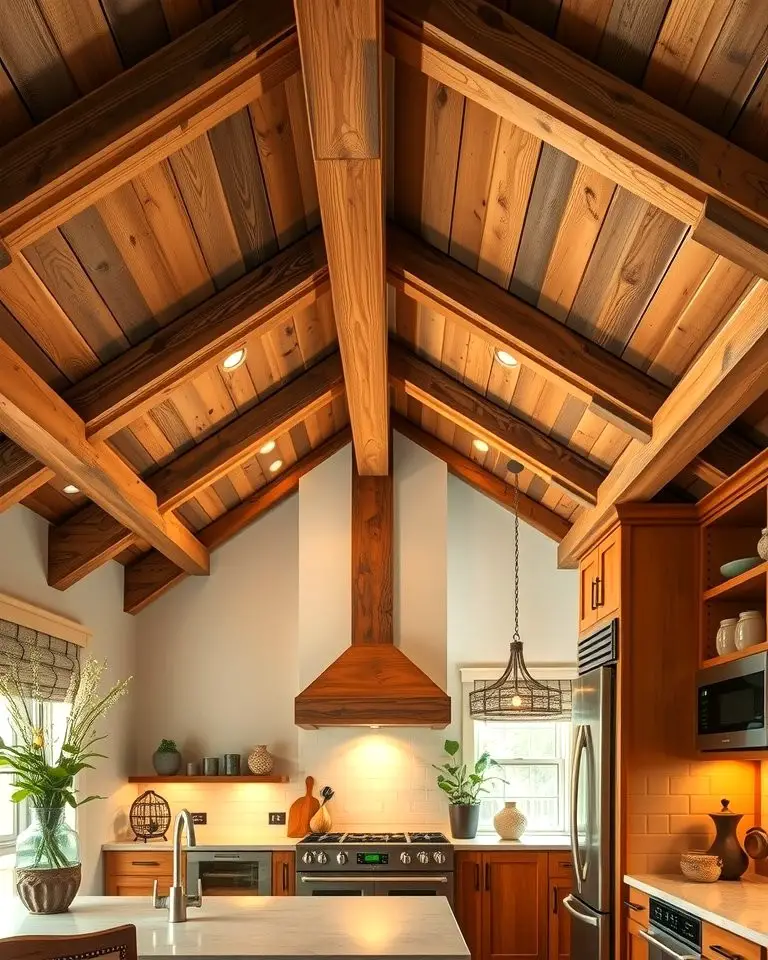
Incorporating wooden ceiling beams into a Japanese kitchen is a brilliant way to inject rustic charm and architectural flair. The exposed beams create a visually striking contrast with the smooth surfaces, adding warmth and texture to the space. The aesthetic appeal of these beams lies in their versatility – they can be stained or left natural, allowing homeowners to tailor the look to suit their personal style.
Moreover, wooden ceiling beams harmonize beautifully with the emphasis on nature found in Japanese design philosophy. Their timeless charm makes them a valuable addition to both traditional and modern kitchens, imbuing the space with character and depth.
Compact Appliances
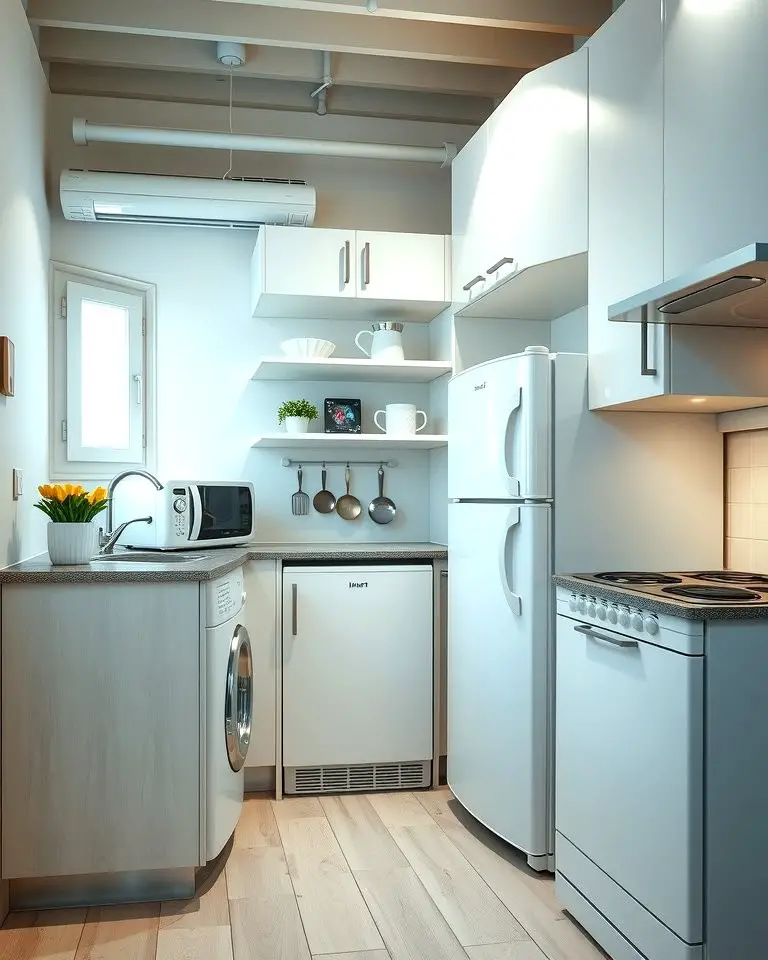
In Japanese small kitchens, compact appliances are a crucial component, providing ample functionality while minimizing spatial requirements. Slimmed-down refrigerators, narrow dishwashers, and countertop ovens are engineered to integrate seamlessly with compact layouts. These space-saving appliances boast efficient designs and often feature multi-functional capabilities, amplifying their utility value.
By incorporating compact appliances, even the most modest kitchens can maintain a practical and user-friendly ambiance, making them an ideal choice for those prioritizing efficiency and maximizing space utilization.
Wooden Utensils and Tools
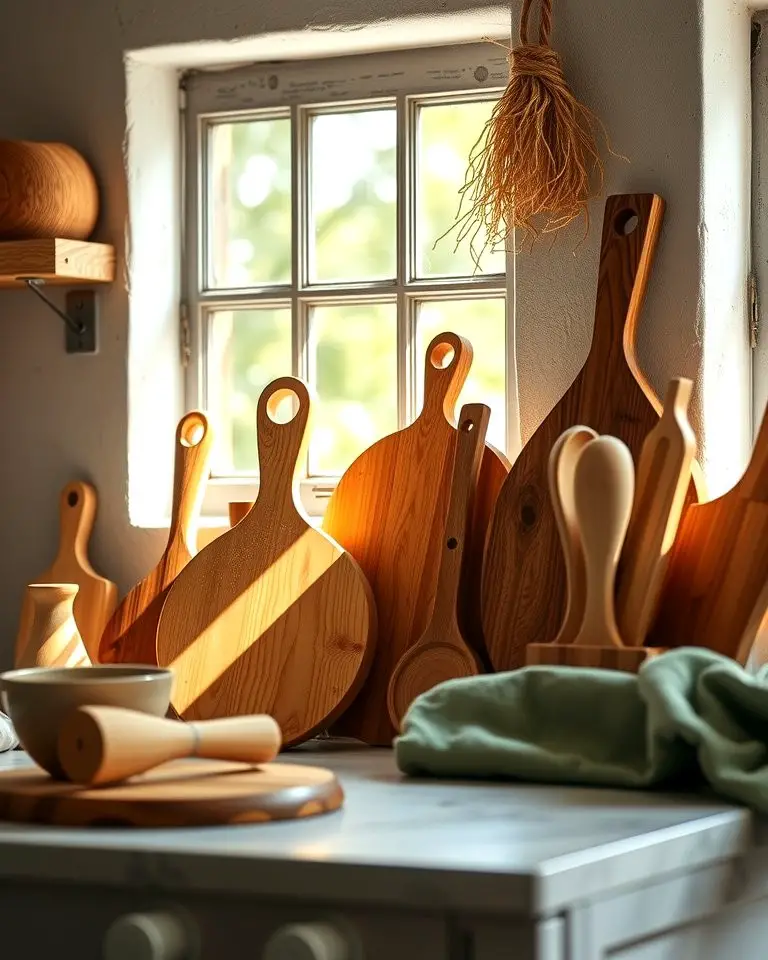
Incorporating wooden utensils and tools into your Japanese-inspired kitchen is a thoughtful way to bring a touch of authenticity and natural charm. The combination of functionality and aesthetic appeal makes these items a staple in any culinary setting. Not only do they serve their purpose, but they also harmonize with the surrounding design.
As a sustainable and durable material, wood offers an eco-friendly alternative that not only benefits the environment but also connects us to nature and tradition – fundamental aspects of Japanese culture. By incorporating wooden tools into your kitchen, you’re able to effortlessly elevate the authenticity of your cooking space.
Minimalist Hardware
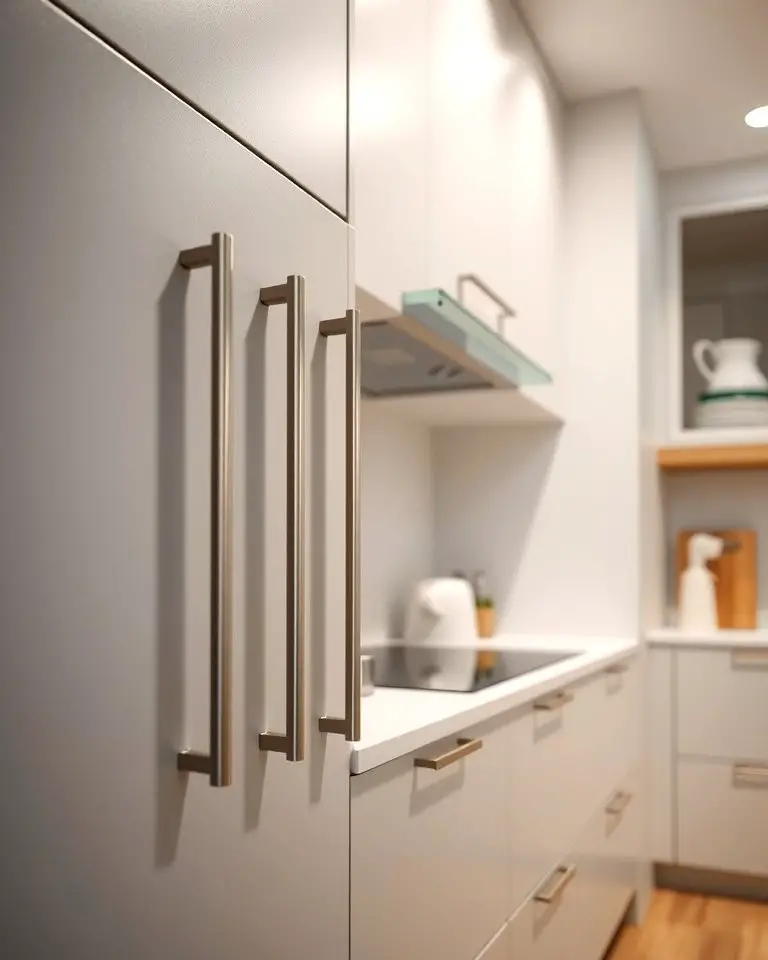
In Japanese kitchens, the key to maintaining a clean and uncluttered look lies in the thoughtful selection of minimalist hardware. Sleek cabinet handles and hidden hinges work together to create a seamless visual flow, while simple designs in matte black, brushed metal, or wood ensure that the hardware remains understated. This focus on subtlety aligns with the minimalist aesthetic’s emphasis on functionality and beauty.
By choosing practical yet stylish hardware, homeowners can achieve a refined and cohesive kitchen design that makes a significant impact despite its understated nature.
Ceramic Dishware Display
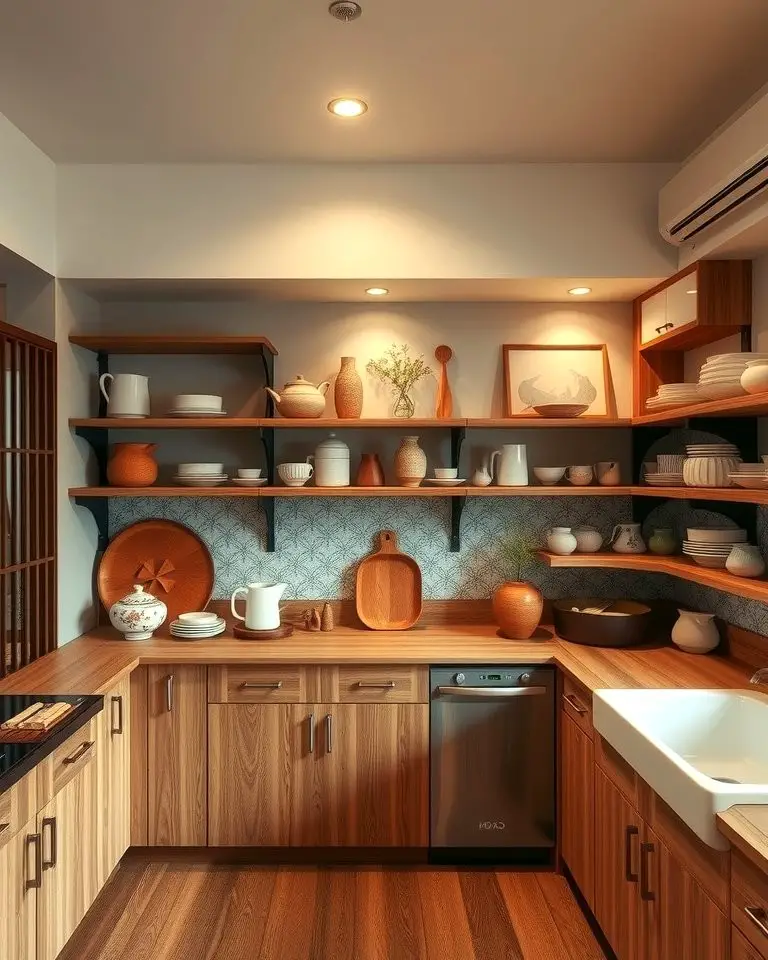
In Japanese kitchens, showcasing ceramic dishware is an artful way to infuse personality and aesthetics. Open shelving or glass-front cabinets provide the perfect backdrop for traditional pieces like teapots, bowls, and plates. Not only do these displays highlight exceptional craftsmanship, but they also serve as functional decor. The earthy tones and textures of ceramics harmonize seamlessly with the natural materials often found in Japanese kitchens, blending beauty and practicality.
This thoughtful approach creates a space that feels both warmly lived-in and elegantly refined.
Traditional Hanging Hooks
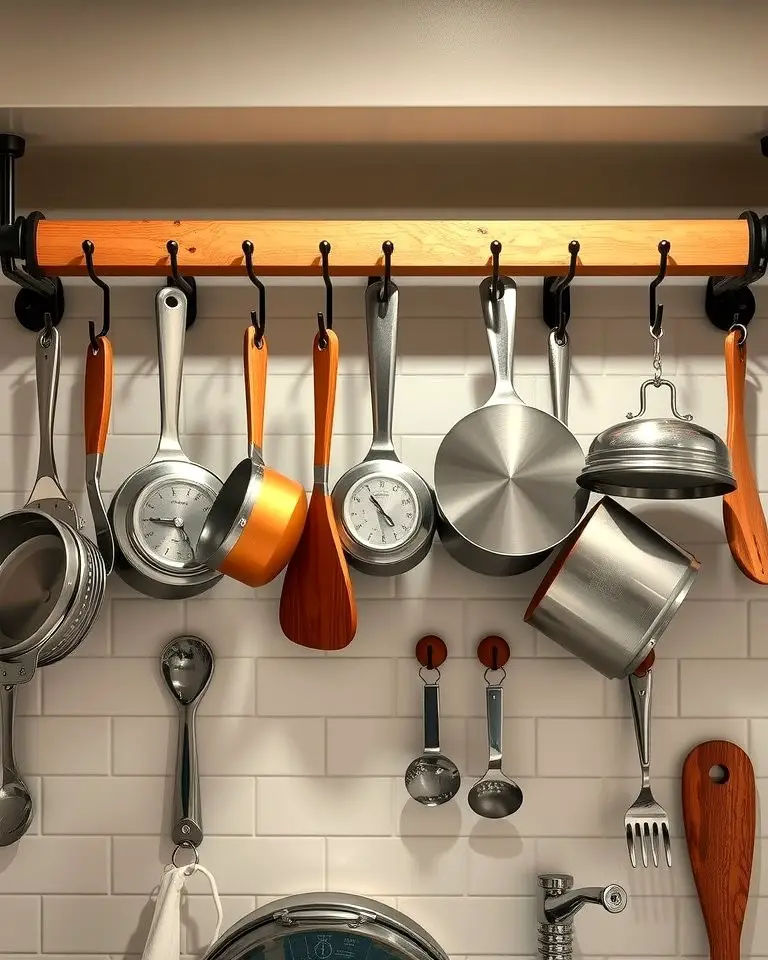
In many kitchens, traditional hanging hooks have become a staple for organizing utensils and tools. By providing ample storage space without taking up too much room, these humble hooks can hold an array of items such as pots, pans, and even heavy-duty cooking vessels. This innovative approach to kitchen organization not only keeps essentials within easy reach but also liberates counter and drawer space, allowing for a more streamlined cooking experience.
Moreover, the aesthetic appeal of hanging hooks aligns perfectly with the minimalist ethos, where every item has its designated place. Furthermore, the rustic charm of these hooks adds a touch of warmth and character to the kitchen, making them a functional yet stylish addition that can complement any culinary setup.
Natural Stone Backsplash
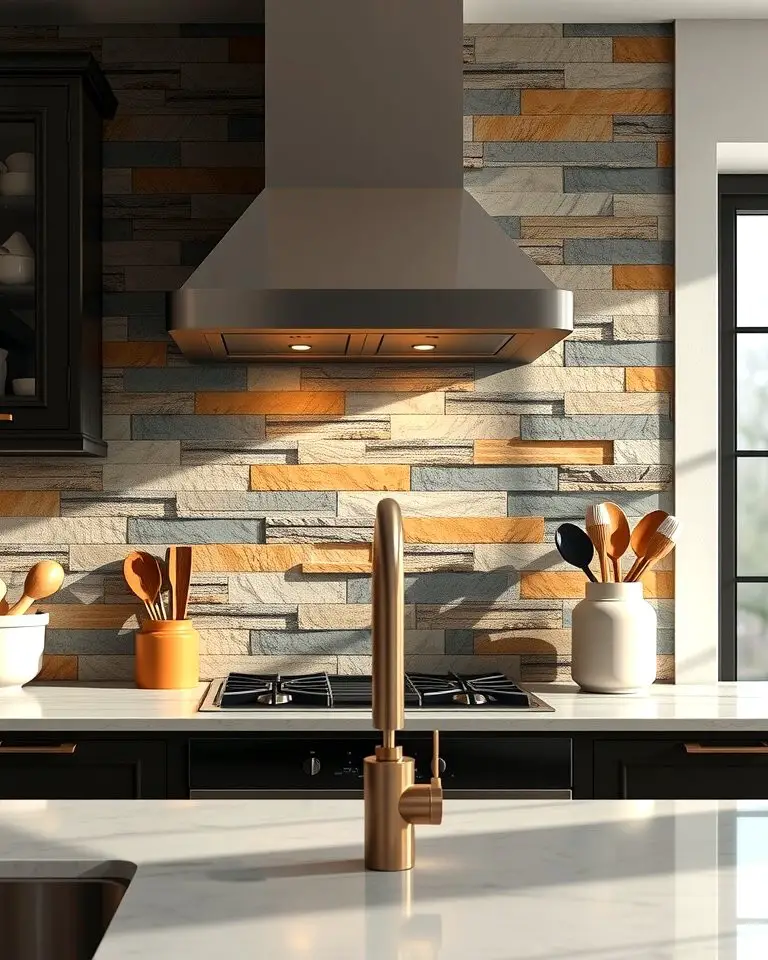
In Japanese-style kitchens, a natural stone backsplash plays a vital role in adding texture and depth to the space. The earthy tones of materials like slate, marble, or travertine create a striking focal point that complements wood and metal accents. Not only do these backsplashes possess an inherent beauty, but they are also incredibly practical.
With their durability, ease of cleaning, and heat resistance, natural stone backsplashes can withstand the rigors of daily kitchen use while maintaining their allure. When it comes to combining elegance and functionality, a natural stone backsplash is an exemplary choice that elevates the overall aesthetic harmony of the space.
Subtle Lighting Layers

In Japanese kitchens, subtle lighting layers create a warm and inviting atmosphere by combining task lighting, under-cabinet lights, and soft ambient fixtures. This harmonious blend of lighting elements balances functionality with style, drawing attention to key areas while maintaining a serene environment. The use of dimmable options enables adjustable brightness, making it perfect for various times of day.
As a result, the kitchen remains both practical and welcoming, exuding a calm vibe that’s essential in any Japanese-inspired space.
Conclusion
Transforming your kitchen into a serene oasis inspired by traditional Japanese design is not just about aesthetics – it’s an opportunity to cultivate a space that embodies balance and tranquility. By thoughtfully incorporating elements such as natural wood accents, carefully considered lighting, and minimalist design principles, you can create a Zen-inspired retreat that soothes the senses.
Whether you’re drawn to compact layouts that prioritize functionality or unique flooring designs that evoke the simplicity of tatami mats, each idea offers a distinct way to bring harmony into your home. At its core, a Japanese-style kitchen is about finding a perfect balance between form and function, allowing it to become a space where you can truly unwind and disconnect from the stresses of everyday life.
By embracing these 25 ideas, you’ll be well on your way to creating a peaceful sanctuary that reflects your values and priorities.

I’m Brandon, the face behind the recipes. As a dedicated food enthusiast, I love experimenting with flavors and sharing my culinary adventures with you.